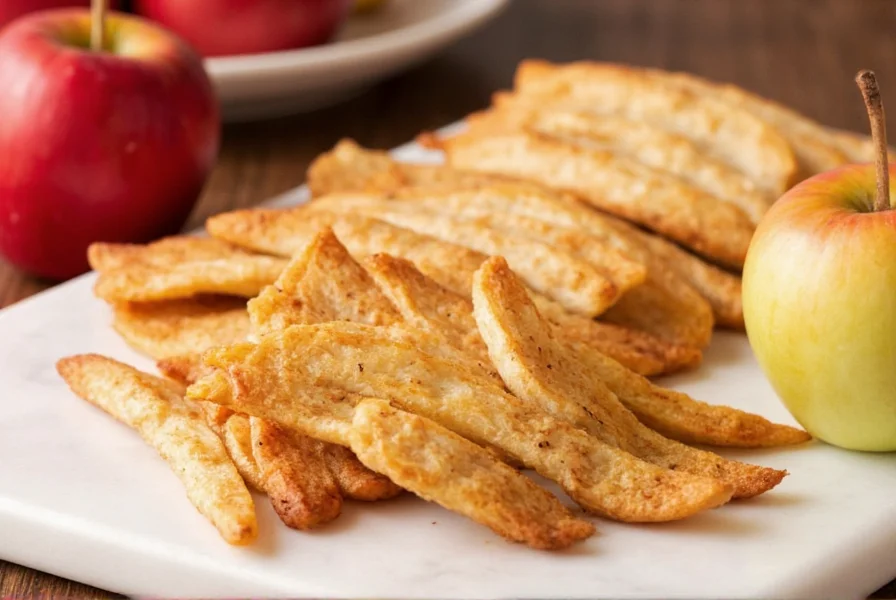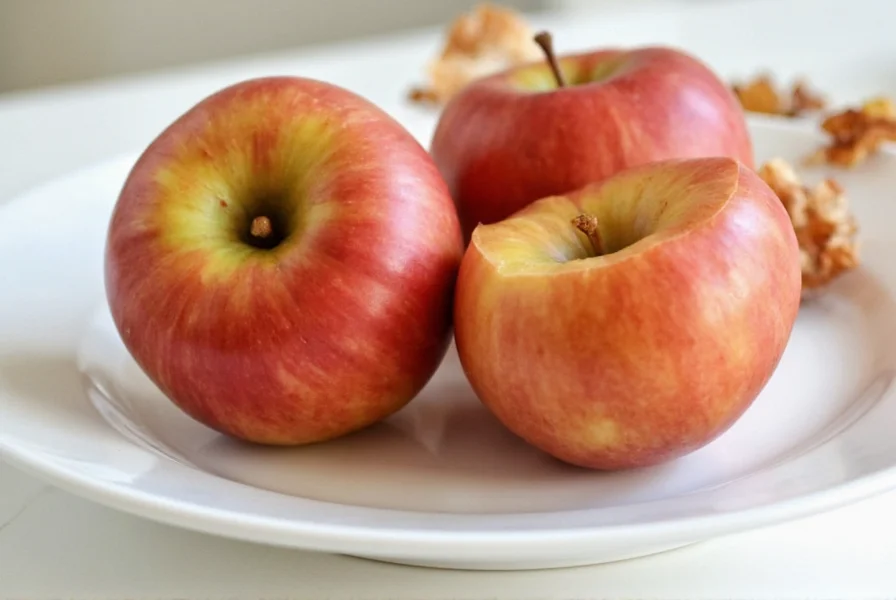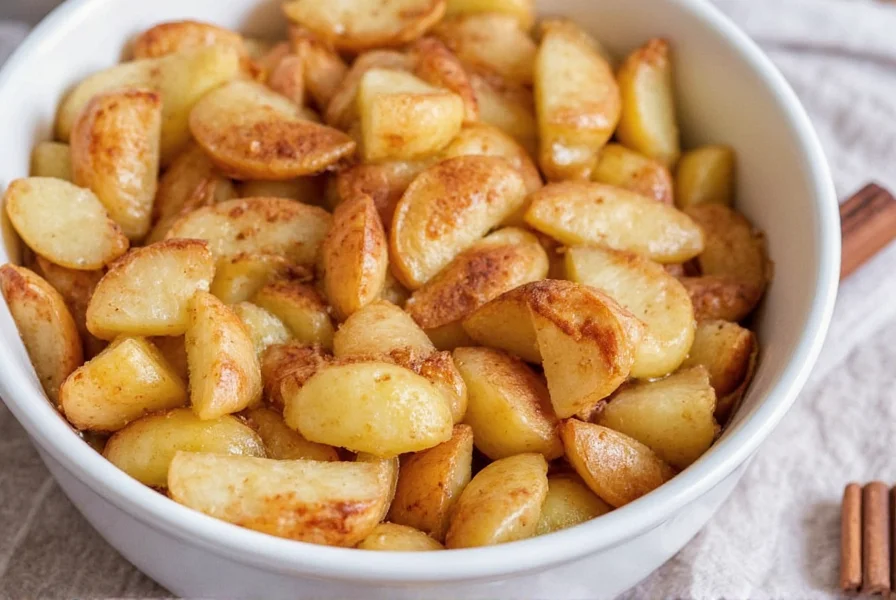Cinnamon and apples form one of the most beloved flavor pairings in culinary tradition, creating a harmony that works beautifully across various cooking methods and applications. This dynamic duo appears in everything from holiday desserts to everyday breakfast toppings, and understanding how to prepare them properly elevates your cooking from ordinary to exceptional.
The Science Behind the Perfect Cinnamon Apple Combination
The magic of cinnamon apples lies in the chemical interaction between the compounds in both ingredients. Apples contain malic and citric acids that complement cinnamon's warm, spicy-sweet profile. When heated together, the heat activates cinnamaldehyde (cinnamon's primary compound) while the apple's pectin breaks down, creating that signature tender texture.
Different apple varieties react uniquely to cinnamon preparation. Firm, tart varieties like Granny Smith maintain their structure during cooking while balancing cinnamon's sweetness. Sweeter varieties like Honeycrisp or Fuji caramelize beautifully but may become too soft if overcooked. For the best results, consider using a combination of apple types to achieve complex flavor and ideal texture.
Essential Ingredients and Equipment
Creating perfect cinnamon apples requires minimal ingredients but attention to quality:
| Ingredient | Recommended Quantity | Substitution Options |
|---|---|---|
| Apples (medium) | 3-4 | N/A |
| Ground cinnamon | 1-2 tsp | Cinnamon sticks (1 stick = 1 tsp ground) |
| Sweetener | 1-2 tbsp | Honey, maple syrup, or brown sugar |
| Butter | 1 tbsp | Coconut oil or vegan butter |
| Lemon juice | 1 tsp | Lime juice or omit |
Essential equipment includes a sharp knife for uniform slicing, a non-reactive baking dish (for oven preparation), or a heavy-bottomed skillet (for stovetop cooking). A microplane is helpful if using whole cinnamon sticks that need grating.
Step-by-Step Preparation Methods
Two primary methods yield excellent cinnamon apples: stovetop sautéing and oven baking. Each produces slightly different textures and flavor profiles.
Stovetop Cinnamon Apples
- Peel and slice 3-4 apples into ¼-inch thick slices
- Melt 1 tablespoon butter in a skillet over medium heat
- Add apples, 1-2 teaspoons cinnamon, 1-2 tablespoons sweetener, and 1 teaspoon lemon juice
- Cook for 8-12 minutes, stirring occasionally, until apples reach desired tenderness
- Remove from heat and let rest for 5 minutes before serving
Oven-Baked Cinnamon Apples
- Preheat oven to 350°F (175°C)
- Place sliced apples in baking dish
- Mix cinnamon, sweetener, melted butter, and lemon juice; pour over apples
- Cover with foil and bake for 25-30 minutes
- Uncover and bake 5-10 minutes more for caramelization

Variations for Different Culinary Applications
Cinnamon apples serve as a versatile component across multiple dishes. Understanding how to adjust the basic preparation creates culinary flexibility:
- For pie filling: Reduce liquid content by pre-cooking apples slightly and thickening with cornstarch
- As a breakfast topping: Add oats or nuts during the last few minutes of cooking for texture
- For savory applications: Reduce sweetener by half and add a pinch of salt to complement pork or poultry dishes
- As a dessert base: Add vanilla extract and a splash of bourbon or rum during cooking
Storage and Serving Recommendations
Proper storage maintains texture and flavor. Cooled cinnamon apples keep for 3-4 days in an airtight container in the refrigerator. For longer storage, freeze in portion-sized containers for up to 3 months.
When reheating, add a teaspoon of water to prevent drying. Microwave in 30-second intervals or warm gently on the stovetop. Cinnamon apples pair beautifully with vanilla ice cream, Greek yogurt, or as a topping for pancakes and waffles.

Avoiding Common Cinnamon Apple Mistakes
Even simple preparations can go wrong without proper technique. Watch for these common pitfalls:
- Overcooking: Apples turn to mush when cooked too long. Remove from heat when a knife meets slight resistance
- Uneven seasoning: Toss apples thoroughly with dry ingredients before adding wet components
- Burning: Maintain medium heat and stir frequently during stovetop preparation
- Watery texture: Excess liquid results from under-draining or using overly juicy apple varieties
Nutritional Profile of Cinnamon Apples
A standard serving (1 cup) of homemade cinnamon apples contains approximately:
- Calories: 120-150
- Dietary fiber: 3-4g (12-16% of daily value)
- Vitamin C: 8-10mg
- Calcium: 20-30mg
- Iron: 0.3-0.5mg
The combination provides antioxidants from both ingredients, with cinnamon offering potential blood sugar regulation benefits when consumed in moderation. To maximize health benefits, reduce added sweeteners and use butter sparingly.
Perfecting Your Cinnamon Apple Technique
Mastering cinnamon apples requires attention to detail but rewards with consistently delicious results. The key is balancing the natural sweetness of apples with cinnamon's warmth without overwhelming either flavor. Remember that apples continue cooking slightly after removal from heat, so err on the side of slightly underdone when testing for doneness.
Experiment with different apple varieties and cinnamon types (Ceylon vs. Cassia) to discover your preferred flavor profile. The most successful preparations enhance rather than mask the apple's natural character while creating that unmistakable aromatic experience that makes cinnamon apples a timeless favorite.
Frequently Asked Questions
What's the best apple variety for cinnamon apples?
Granny Smith apples provide the ideal balance of tartness and firm texture that holds up well during cooking. For sweeter preparations, Honeycrisp or Pink Lady offer excellent flavor complexity while maintaining structure. Avoid Red Delicious as they become mushy when cooked.
Can I make cinnamon apples without added sugar?
Yes, you can prepare cinnamon apples without added sugar by using naturally sweeter apple varieties like Fuji or Gala. The natural pectin in apples creates a caramelized effect when cooked slowly, and a small amount of lemon juice enhances perceived sweetness. For extra flavor depth without sugar, try adding a pinch of cardamom or nutmeg.
How do I prevent my cinnamon apples from becoming too watery?
To prevent excess liquid, choose firmer apple varieties, slice uniformly to ensure even cooking, and avoid overcrowding the pan. For stovetop preparation, cook uncovered during the final minutes to evaporate excess moisture. If making ahead, drain any accumulated liquid before reheating. Adding 1 teaspoon of cornstarch mixed with 1 tablespoon of cold water during the last 2 minutes of cooking can also help thicken the syrup.
Can I use cinnamon sticks instead of ground cinnamon for apples?
Absolutely. One cinnamon stick equals approximately 1 teaspoon of ground cinnamon. For best results, simmer the stick with the apples and remove it before serving, or grate the softened stick into the finished dish for more intense flavor. Cinnamon sticks provide a more subtle, complex flavor profile compared to ground cinnamon.











 浙公网安备
33010002000092号
浙公网安备
33010002000092号 浙B2-20120091-4
浙B2-20120091-4